2019-10-17 - Nº 233
Editorial
Esta é a Newsletter Nº 233 que se apresenta com o mesmo formato que as anteriores. Se gostar da Newsletter partilhe-a!
Todas as Newsletters encontram-se indexadas no link.
Esta Newsletter tem os seguintes tópicos:
Faz hoje anos que nascia, em 1820, Édouard Roche](https://en.wikipedia.org/wiki/%C3%89douard_Roche). Este astrónomo matemático francês estudou a estrutura interna dos corpos celestes e foi o primeiro a propor um modelo da Terra com um núcleo sólido. Ele determinou em 1850 o limite de Roche para um satélite ter uma órbita estável em torno de um planeta de densidade igual. O corpo menor não podia ficar a 2,44 raios do corpo maior sem se separar do efeito da força gravitacional entre eles. Mais tarde, ele fez uma análise matemática rigorosa da hipótese nebular de Pierre Laplace e mostrou em 1873 a instabilidade de um corpo em forma de lente em rotação rápida.
Faz também hoje anos que nascia, em 1888, Paul Bernays. Este matemático e lógico suíço, ficou conhecido pelas suas tentativas de desenvolver uma teoria unificada da matemática. Bernays, influenciado pelo pensamento de Hilbert, acreditava que toda a estrutura da matemática poderia ser unificada como uma única entidade coerente. Para iniciar esse processo, foi necessário elaborar um conjunto de axiomas nos quais uma teoria completa pudesse se basear. Ele tentou colocar a teoria dos conjuntos numa base axiomática para evitar os paradoxos. Entre 1937 e 1954, Bernays escreveu uma série de artigos no Journal of Symbolic Logic que tentaram alcançar esse objectivo. Em 1958, Bernays publicou a teoria axiomática dos conjuntos, na qual ele combinou seu trabalho sobre a axiomatização da teoria dos conjuntos.
Nesta semana que passou a Canonical anunciou mais uma versão do Ubuntu - o 19.10. Esta versão teve um foco especial na produtividade do programador em AI / ML, novos recursos avançados para o MicroK8s (Kubernetes) e fornecer o mais rápido desempenho do desktop GNOME. Um dos hardwares suportados é o O Raspberry Pi 4 Modelo B. Com o GNOME 3.34, o Ubuntu 19.10 é a release mais rápida, com melhorias significativas no desempenho, proporcionando uma experiência mais ágil e responsiva, mesmo em hardware mais antigo. A organização das aplicações é mais fácil com a capacidade de arrastar e soltar ícones em pastas categorizadas, enquanto os utilizadores podem seleccionar variantes claras ou escuras do tema Yaru, dependendo das suas preferências ou para melhorar a acessibilidade da visualização.
Também esta semana o Chang'e 4 da China completa 10 dias lunares no lado mais afastado da Lua. Tanto o Chang'e 4 como o rover Yutu 2 entraram num estado de adormecimento em 5 de Outubro, em preparação para sobreviver a uma décima noite lunar. Durante a noite lunar de duas semanas, as temperaturas podem descer para menos de 310 graus Fahrenheit negativos (190 graus Celsius negativos), ameaçando os componentes da sonda.
Na Newsletter desta semana apresentamos diversos projetos de maker. São também apresentados dois modelos 3D.
 João Alves ([email protected])
João Alves ([email protected])
O conteúdo da Newsletter encontra-se sob a licença  Creative Commons Attribution-NonCommercial-ShareAlike 4.0 International License.
Creative Commons Attribution-NonCommercial-ShareAlike 4.0 International License.
Novidades da Semana
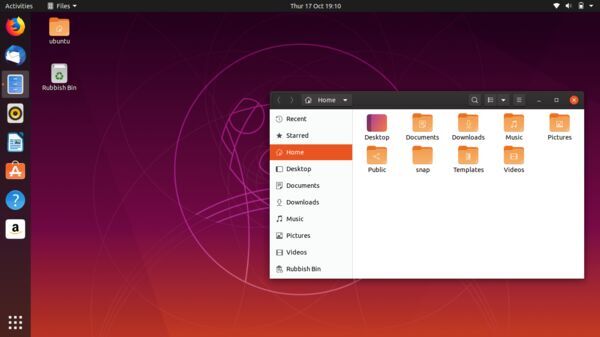
Ubuntu 19.10 delivers Kubernetes at the edge, multi-cloud infrastructure economics and an integrated AI/ML developer experience
"Canonical today announced the release of Ubuntu 19.10 with a focus on accelerating developer productivity in AI/ML, new edge capabilities for MicroK8s and delivering the fastest GNOME desktop performance. “In the fifteen years since the first Ubuntu release, we have seen Ubuntu evolve from the desktop to become the platform of choice across public cloud, open infrastructure, IoT and AI. With the 19.10 release, Ubuntu continues to deliver strong support, security and superior economics to enterprises, developers and the wider community,” said Mark Shuttleworth, CEO of Canonical. New edge capabilities for Kubernetes Ubuntu 19.10 brings enhanced edge computing capabilities with the addition of strict confinement to MicroK8s. Strict confinement ensures complete isolation and a tightly secured production-grade Kubernetes environment, all in a small footprint ideal for edge gateways. MicroK8s add-ons – including Istio, Knative, CoreDNS, Prometheus, and Jaeger – can now be deployed securely at the edge with a single command." [...]

China's Chang'e 4 Completes 10 Lunar Days on Far Side of the Moon
"On mission day 10, Yutu 2 covered its shortest distance yet, but the rover seems to be performing well. China's Chang'e 4 mission has completed 10 lunar days of activity on the far side of the moon, returning new images and carrying out science tasks. Both the Chang'e 4 lander and the Yutu 2 rover entered a dormant state on Oct. 5 in preparation to survive a 10th lunar night. During the roughly two-week-long lunar night, temperatures can drop to as low as minus 310 degrees Fahrenheit (minus 190 degrees Celsius), threatening the spacecraft's health every time. The rover and the lander began lunar day 10 on Sept. 22 and 23, respectively, according to the Chinese Lunar Exploration Program. Yutu 2 drove just 16.7 feet (5.1 meters) on day 10 — the shortest distance it has covered during a single day." [...]
Outras Notícias
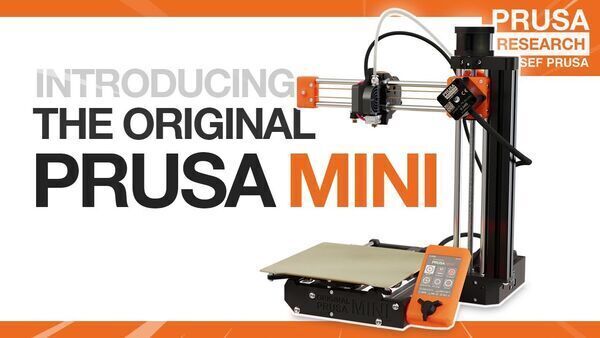
Original Prusa MINI is here: Smart and compact 3D printer for everyone!
"We still have a couple of weeks until the holiday season, but here’s an early gift for you: I’m excited to announce our brand new Original Prusa MINI, a smart and compact 3D printing workhorse with all the bells and whistles you’re accustomed to when you buy an Original Prusa 3D printer. While we know that many of you have been calling for a larger printer, we think the MINI might surprise you and this article may have some additional treats at the end! The MINI has a print volume of 18×18×18 cm (7×7×7 inches), removable spring steel bed sheets, networking with ethernet and optional Wi-Fi and it’s all controlled by our brand new custom-made 32-bit Buddy mainboard with silent 2209 Trinamic drivers. The icing on the cake, we managed to do this (and more) for 349 USD / 379 EUR (VAT incl.)! A bit of a backstory: During the last 10 years of making 3D printers, I have come to realize there will never be a single universal “almighty” machine. I like the idea of what’s currently happening in the field of computer processors, especially ARM with their big.LITTLE architecture." [...]

NASA Spacecraft Launches on Mission to Explore Frontier of Space
"After successfully launching Thursday night, NASA’s Ionospheric Connection Explorer (ICON) spacecraft is in orbit for a first-of-its-kind mission to study a region of space where changes can disrupt communications and satellite orbits, and even increase radiation risks to astronauts. A Northrop Grumman Stargazer L-1011 aircraft took off at 8:31 p.m. EDT from Cape Canaveral Air Force Station in Florida carrying ICON, on a Northrop Grumman Pegasus XL rocket, to launch altitude of about 39,000 feet. The first launch opportunity around 9:30 was skipped due to communication issues between the ground team at Cape Canaveral and the aircraft. On the second attempt, the aircraft crew released its payload at 9:59 p.m. EDT and automated systems on the Pegasus rocket launched ICON, a spacecraft roughly the size of a refrigerator, into space. The spacecraft’s solar panels successfully deployed, indicating it has power with all systems operating. After an approximately month-long commissioning period, ICON will begin sending back its first science data in November." [...]
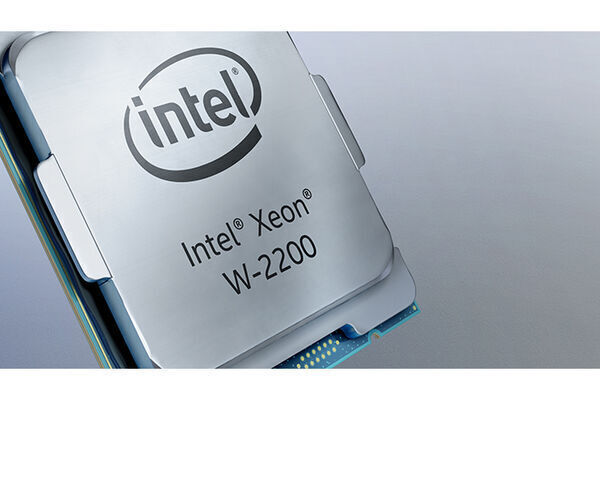
Intel Enables AI Acceleration and Brings New Pricing to Intel Xeon W and X-Series Processors
"Latest Workstation and High-End Desktop Platforms Purpose-Built for Professional Content Creators and Desktop Enthusiasts NEWS HIGHLIGHTS Intel announces the newest generation of Intel® Xeon® W-2200 and X-series platforms, targeting availability in November. With both platforms, Intel continues to trailblaze with artificial intelligence (AI) in computing, enabling AI acceleration with Intel® Deep Learning Boost in high-end desktop (HEDT) PCs and mainstream workstations for the first time. Intel introduces new pricing for Xeon, X-series and select Intel® Core™ processors, continuing its charter to deliver more value and accessibility to customers end-to-end across its portfolio of leadership products. SANTA CLARA, Calif., Oct. 7, 2019 – Intel today unveiled its latest lineup of Intel Xeon W and X-series processors, which puts new classes of computing performance and AI acceleration into the hands of professional creators and PC enthusiasts. Custom-designed to address the diverse needs of these growing audiences, the new Xeon W-2200 and X-series processors are targeted to be available starting November, along with a new pricing structure that represents an easier step up for creators and enthusiasts from Intel Core S-series mainstream products. Intel is the only company that delivers a full portfolio of products precision-tuned to handle the sustained compute-intensive workloads used by professional creators and enthusiasts every day." [...]
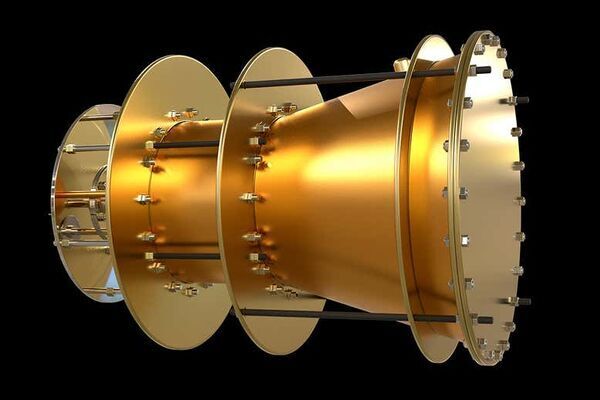
NASA engineer's 'helical engine' may violate the laws of physics
"For every action, there is a reaction: that is the principle on which all space rockets operate, blasting propellant in one direction to travel in the other. But one NASA engineer believes he could take us to the stars without any propellant at all. Designed by David Burns at NASA’s Marshall Space Flight Center in Alabama, the “helical engine” exploits mass-altering effects known to occur at near-light speed. Burns has posted a paper describing the concept to NASA’s technical reports server. It has been met with scepticism from some quarters, but Burns believes his concept is worth pursuing. “I’m comfortable with throwing it out there,” he says." [...]
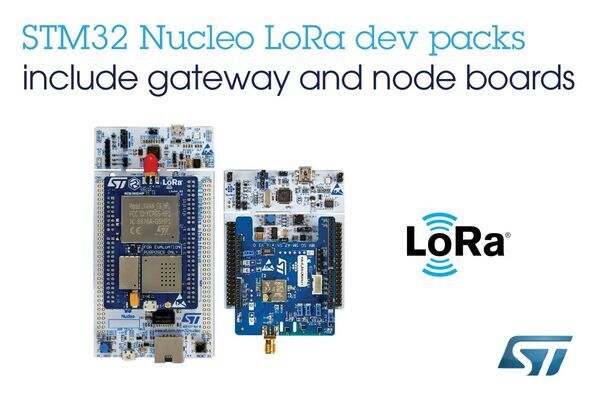
Affordable LoRa® Development Packs from STMicroelectronics Jump-Start Projects Leveraging Large-Scale LPWAN Connectivity
"STMicroelectronics has introduced two $99 ready-to-use development packs that enable all types of users from large corporations to smaller companies, independent designers, hobbyists, and schools to utilize LoRa® ’s long-range, low-power wireless IoT connectivity for tracking, positioning, metering, and many other applications. The two packs provide a complete LoRaWAN® development chain including gateway and end-node boards, firmware, and tools, leveraging ST’s convenient and proven STM32* Nucleo evaluation boards. Catering separately for regions with 868MHz/915MHz/923MHz and sub-550MHz ISM frequency bands, each pack includes proprietary gateway software and ST’s I-CUBE-LRWAN end-node software. The node and gateway boards come with an antenna and on-board debugger. The LoRa gateway included in each pack is built with an STM32 Nucleo-144 development board, NUCLEO-F746ZG, which contains an STM32F746ZGT6 microcontroller (MCU). Unlike with a commercial gateway, users can easily access device pins to assist development." [...]

UPS Flight Forward Attains FAA’s First Full Approval For Drone Airline
"UPS (NYSE:UPS) subsidiary UPS Flight Forward Inc. today announced it has received the U.S. government’s first full Part 135 Standard certification to operate a drone airline. The company will initially expand its drone delivery service further to support hospital campuses around the country, and to provide solutions for customers beyond those in the healthcare industry. UPS Flight Forward plans in the future to transport a variety of items for customers in many industries, and regularly fly drones beyond the operators’ visual line of sight. The U.S. Federal Aviation Administration (FAA) awarded UPS Flight Forward a Part 135 Standard certification on Friday. The UPS subsidiary immediately launched the first drone delivery flight by any company under Part 135 Standard at WakeMed’s hospital campus in Raleigh, N.C. That flight, using a Matternet M2 quadcopter, was flown under a government exemption allowing for a “beyond visual line of sight” (BVLOS) operation, also a first in the U.S. for a regular revenue-generating delivery. UPS has proven the need for drone delivery in healthcare operations, where the shortest time in transit can improve efficiency and help healthcare professionals serve their patients better." [...]
Ciência e Tecnologia

Oobleck’s weird behavior is now predictable
"MIT engineers develop a model that predicts how the cornstarch-water mixture turns from liquid to solid, and back again. It’s a phenomenon many preschoolers know well: When you mix cornstarch and water, weird things happen. Swish it gently in a bowl, and the mixture sloshes around like a liquid. Squeeze it, and it starts to feel like paste. Roll it between your hands, and it solidifies into a rubbery ball. Try to hold that ball in the palm of your hand, and it will dribble away as a liquid." [...]
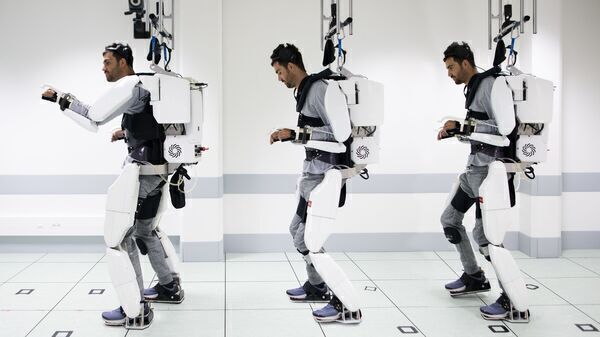
An unprecedented neuroprosthetic allows a tetraplegic patient fitted with an exoskeleton to move
"For the first time, a tetraplegic patient was able to walk and control both arms using this neuroprosthetic, which records, transmits, and decodes brain signals in real-time to control an exoskeleton. The results of a clinical study under the Brain Computer Interface (BCI) Project at Clinatec were published on 4 October 2019 in The Lancet Neurology journal and provide proof of concept for controlling a four-limb exoskeleton. The system is driven via the long-term implant of a semi-invasive medical device to record brain activity developed at CEA in Grenoble. In the long term, this technology is expected to give greater mobility to individuals with severe motor disabilities. Real-time and wireless technology Tetraplegia is caused by a lesion on the spinal cord that prevents the nervous system from controlling all four limbs. To limit dependency and facilitate the mobility of patients with this severe disability, medical doctors, physicians and researchers at Clinatec, the CEA laboratory in Grenoble operated with the Grenoble university hospital, have developed a device to control a four-limb exoskeleton that records and decodes brain signals." [...]

3D microchips could pave way to more efficient “spintronic” computers
"Researchers from The University of Manchester, with colleagues from the universities of Groningen and Utrecht in the Netherlands, say 3D curved microchip structures could be used to develop more powerful – and energy efficient – spin-based computers. The work, published online in the journal Nano Letters, outlines the main challenges involved in creating 3D curved microchips that rely on the “spin” of electrons to carry and store information. According to Dr Ivan Vera-Marun, a lead researcher on the study, the key issue is that spin-based microchips are usually 2D structures. Therefore, a fundamental challenge when building 3D structures is transporting electrons without losing their unique spin properties. Collectively, the use of electron spin in electronics is known as “spintronics”. To investigate this, the researchers used ion beams – a form of molecular sandblasting – to carve trenches in a piece of silicon, the material which forms the basis of microchips." [...]
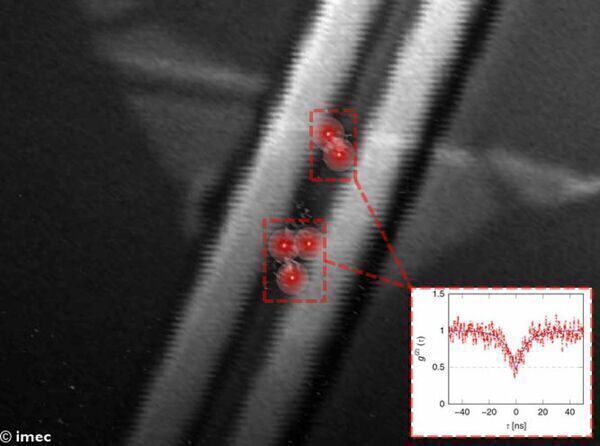
2D-based single photon emitters integrated with CMOS-compatible Silicon Nitride waveguides
"Researchers from the Photonics Research Group, an imec research group at Ghent university and MIT announced that they have integrated single photon emitters in 2D layered materials with a Silicon Nitride photonic chip. Even for moderate quantum yields, dielectric cavities could be designed such that the single photon extraction into the guided mode can reach unity. The results published in Nature Communications, provide a crucial step in fundamental quantum photonics and 2D materials research. Photonic integrated circuits (PICs) enable the miniaturization of complex quantum optical circuits connecting large numbers of photonic devices with optimized insertion losses and phase stability. A central building block for such an integrated quantum circuit is a single photon emitter (SPE), and a variety of material systems have been investigated to create such on-chip SPEs. 2D-based SPEs have some unique properties that make them particularly appealing for integration with PICs." [...]

Engineers solve 50-year-old puzzle in signal processing
"Something called the fast Fourier transform is running on your cell phone right now. The FFT, as it is known, is a signal-processing algorithm that you use more than you realize. It is, according to the title of one research paper, “an algorithm the whole family can use.” Alexander Stoytchev – an associate professor of electrical and computer engineering at Iowa State University who’s also affiliated with the university’s Virtual Reality Applications Center, its Human Computer Interaction graduate program and the department of computer science – says the FFT algorithm and its inverse (known as the IFFT) are at the heart of signal processing. And, as such, “These are algorithms that made the digital revolution possible,” he said. They’re a part of streaming music, making a cell phone call, browsing the internet or taking a selfie. The FFT algorithm was published in 1965." [...]

System can minimize damage when self-driving vehicles crash
"Engineers have developed decision-making and motion-planning technology to limit injuries and damage when self-driving vehicles are involved in unavoidable crashes. After recognizing that a collision of some kind is inevitable, the system works by analyzing all available options and choosing the course of action with the least serious outcome. “What can we do in order to minimize the consequences?” said Amir Khajepour, a professor of mechanical and mechatronics engineering at the University of Waterloo. “That is our focus.” The first rule for the autonomous vehicle (AV) crash-mitigation technology is avoiding collisions with pedestrians. From there, it weighs factors such as relative speeds, angles of collision and differences in mass and vehicle type to determine the best possible manoeuvre, such as braking or steering in one direction or another. “We consider the whole traffic environment perceived by the autonomous vehicle, including all the other vehicles and obstacles around it,” said Dongpu Cao, also a mechanical and mechatronics engineering professor at Waterloo." [...]
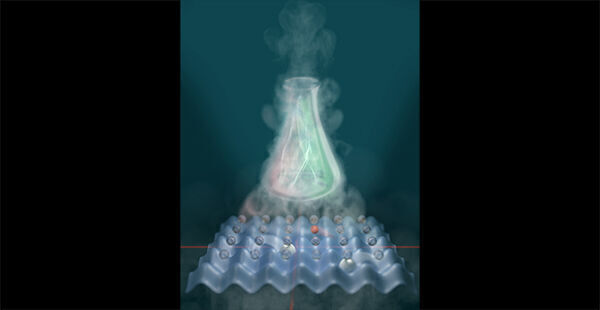
Simulating molecules with quantum simulators
"A study published in Nature provides a solution on how to simulate chemical reactions with quantum chemistry. Being able to simulate how a molecule unfolds or how it reacts with another one to produce a larger molecular compound is an extremely complex task. So far, classical computers or even supercomputers have not been able to model the many-body interactions that occur within such compounds, simply because they do not have the capacity to process this information in a reasonable amount of time. As a solution, quantum simulators have become an alternative approach to tackle quantum problems that overpass our computational capabilities. In particular, they have been used in the field of condensed matter physics and to imitate crystals but, until now, it remained unknown how to simulate the interactions between electrons accurately enough within complex molecular systems. Thus, in a study recently published in Nature initiated at MPQ in Garching, researcher Javier Argüello-Luengo, currently a doctoral candidate at ICFO, together with Alejandro González-Tudela from IFF-CSIC, Tao Shi from CAS, Peter Zoller, Director of IQOQI, and led by Ignacio Cirac, Director and Head of the Theory Department at the MPQ, report on a new approach that shows how an analog quantum simulator could mimic the quantum chemistry of molecules." [...]
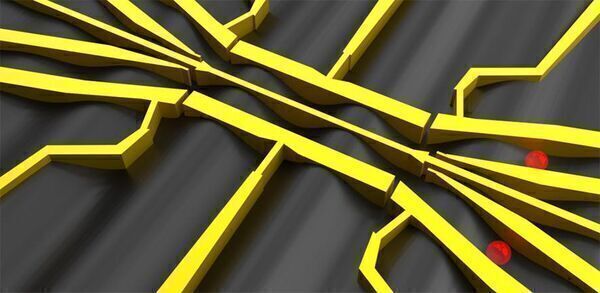
Quantum state of single electrons controlled by ‘surfing’ on sound waves
"Researchers have successfully used sound waves to control quantum information in a single electron, a significant step towards efficient, robust quantum computers made from semiconductors. The international team, including researchers from the University of Cambridge, sent high-frequency sound waves across a modified semiconductor device to direct the behaviour of a single electron, with efficiencies in excess of 99%. The results are reported in the journal Nature Communications. A quantum computer would be able to solve previously unsolvable computational problems by taking advantage of the strange behaviour of particles at the subatomic scale, and quantum phenomena such as entanglement and superposition. However, precisely controlling the behaviour of quantum particles is a mammoth task. “What would make a quantum computer so powerful is its ability to scale exponentially,” said co-author Hugo Lepage, a PhD candidate in Cambridge’s Cavendish Laboratory, who performed the theoretical work for the current study." [...]

“Electroadhesive” stamp picks up and puts down microscopic structures
"New technique could enable assembly of circuit boards and displays with more minute components. If you were to pry open your smartphone, you would see an array of electronic chips and components laid out across a circuit board, like a miniature city. Each component might contain even smaller “chiplets,” some no wider than a human hair. These elements are often assembled with robotic grippers designed to pick up the components and place them down in precise configurations. As circuit boards are packed with ever smaller components, however, robotic grippers’ ability to manipulate these objects is approaching a limit. “Electronics manufacturing requires handling and assembling small components in a size similar to or smaller than grains of flour,” says Sanha Kim, a former MIT postdoc and research scientist who worked in the lab of mechanical engineering associate professor John Hart." [...]

These new soft actuators could make soft robots less bulky
"Engineers at the University of California San Diego have developed a way to build soft robots that are compact, portable and multifunctional. The advance was made possible by creating soft, tubular actuators whose movements are electrically controlled, which makes them easy to integrate with small electronic components. As a proof of concept, engineers used these new actuators to build a soft, battery-powered robot that can walk untethered on flat surfaces and move objects. They also built a soft gripper that can grasp and pick up small objects. The team, led by UC San Diego mechanical and aerospace engineering professor Shengqiang Cai, published the work Oct. 11 in Science Advances. A problem with most soft actuators is that they come with bulky setups." [...]
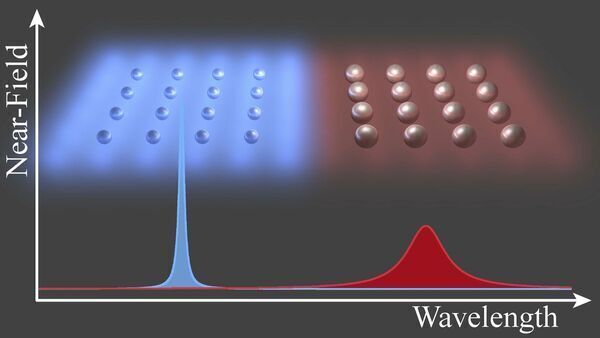
Nanoscale manipulation of light leads to exciting new advancement
"UNM researchers find decreasing the density of nanoparticles in ordered arrays produces exceptional field enhancements Controlling the interactions between light and matter has been a long-standing ambition for scientists seeking to develop and advance numerous technologies that are fundamental to society. With the boom of nanotechnology in recent years, the nanoscale manipulation of light has become both, a promising pathway to continue this advancement, as well as a unique challenge due to new behaviors that appear when the dimensions of structures become comparable to the wavelength of light. Scientists in the Theoretical Nanophotonics Group at The University of New Mexico’s Department of Physics and Astronomy have made an exciting new advancement to this end, in a pioneering research effort titled “Analysis of the Limits of the Near-Field Produced by Nanoparticle Arrays,” published recently in the journal, ACS Nano, a top journal in the field of nanotechnology. The group, led by Assistant Professor Alejandro Manjavacas, studied how the optical response of periodic arrays of metallic nanostructures can be manipulated to produce strong electric fields in their vicinity. The arrays they studied are composed of silver nanoparticles, tiny spheres of silver that are hundreds of times smaller than the thickness of a human hair, placed in a repeating pattern, though their results apply to nanostructures made of other materials as well. Because of the strong interactions between each of the nanospheres, these systems can be used for different applications, ranging from vivid, high-resolution color printing to biosensing that could revolutionize healthcare." [...]
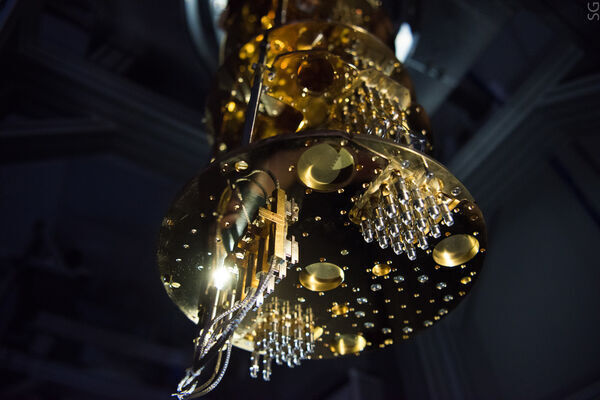
First Prototype of a Quantum Computer on Superconductive Materials Sucessfully Launched in Russia
"Scientists from NUST MISIS sucessfully launched Russia’s first prototype of a quantum computer. The device working on two qubits performed a specific quantum algorithm, exceeding the previously known accuracy limit by 3%. Superconducting materials were taken as the basis for qubits. Work on the creation of a quantum computer within the framework of Russian Foundation for Advanced Research Projects has been carried out at the NISU MISIS since 2016 under the supervision of Valery Ryazanov, the chief researcher of the University’s Laboratory for Superconducting Metamaterials. The design involves the use of superconducting materials as the basis for qubits. Qubits (quantum bits) are the “heart” of a quantum computer, an analogue of the bits of a regular PC, but far more advanced." [...]
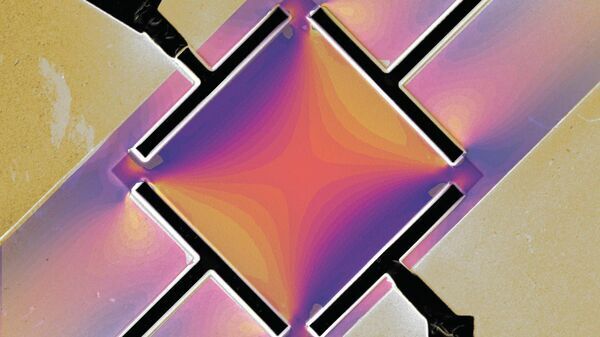
Controlling superconducting regions within an exotic metal
"Researchers at EPFL have created a metallic microdevice in which they can define and tune patterns of superconductivity. Their discovery, which holds great promise for quantum technologies of the future, has just been published in Science. Superconductivity has fascinated scientists for many years since it offers the potential to revolutionize current technologies. Materials only become superconductors – meaning that electrons can travel in them with no resistance – at very low temperatures. These days, this unique zero resistance superconductivity is commonly found in a number of technologies, such as magnetic resonance imaging (MRI). Future technologies, however, will harness the total synchrony of electronic behavior in superconductors – a property called the phase." [...]
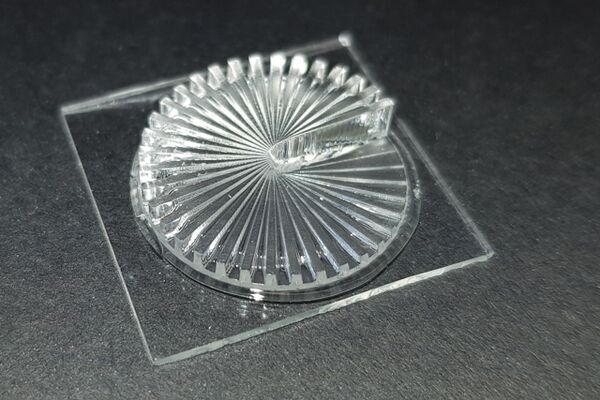
3D-printed optics for individualized mass production
"Individually manufactured and still suitable for mass production? Within the framework of the Fraunhofer "Go Beyond 4.0" project, this apparent contradiction is to be eliminated. In the field of illumination optics, the two Fraunhofer Institutes for Silicate Research ISC and for Optics and Precision Engineering IOF developed new material concepts and processing technology for multifunctional and individualized optical components for “lot size 1”. The starting point is the relatively easy customizable 3D printing technology. Disadvantages of three-dimensional printing so far, however, were the disturbing effects in the volume and on the surfaces of printed objects, such as layering artifacts or roughness. Furthermore, the material properties of conventional 3D-printable polymers are usually insufficient for advanced optical components and systems." [...]
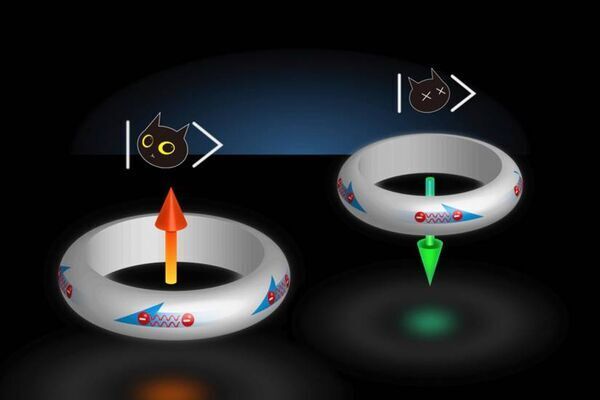
Researchers find superconducting material that could someday power quantum computers
"The material naturally exists between two states, a finding that could pave the way for more complex computing in the future Quantum computers with the ability to perform complex calculations, encrypt data more securely, and more quickly predict the spread of viruses may be within closer reach thanks to a discovery by Johns Hopkins researchers. "We've found that a certain superconducting material contains special properties that could be the building blocks for technology of the future," says Yufan Li, a postdoctoral fellow in the Department of Physics & Astronomy at Johns Hopkins University and first author of the paper, which will be published Friday in Science. Today's computers use bits, represented by an electrical voltage or current pulse, to store information. Bits exist in two binary states, represented in computing as "0" or "1." Quantum computers, based on the laws of quantum mechanics, use quantum bits, or qubits, which not only use two states, but also use a superposition of those two states. A famous example of qubit is Schrodinger's cat, a paradox that posits that a hypothetical cat that may be both dead and alive at the same time." [...]
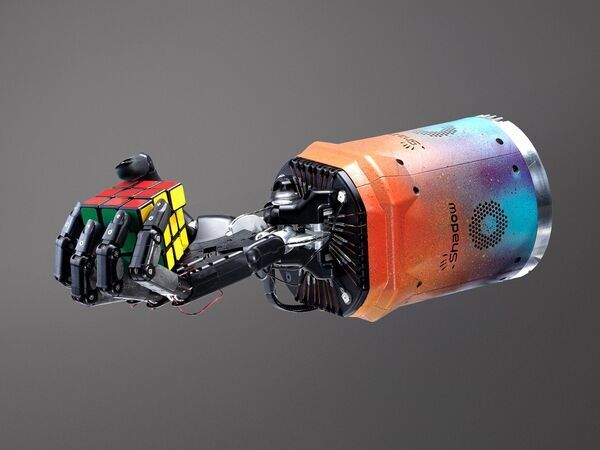
OpenAI Teaches Robot Hand to Solve Rubik's Cube
"Using reinforcement learning and randomized simulations, researchers taught this robot how to solve a Rubik's cube one-handed In-hand manipulation is a skill that, as far as I’m aware, humans in general don’t actively learn. We just sort of figure it out by doing other, more specific tasks with our fingers and hands. This makes it particularly tricky to teach robots to solve in-hand manipulation tasks because the way we do it is through experimentation and trial and error. Robots can learn through trial and error as well, but since it usually ends up being mostly error, it takes a very, very long time. Last June, we wrote about OpenAI’s approach to teaching a five-fingered robot hand to manipulate a cube. The method that OpenAI used leveraged the same kind of experimentation and trial and error, but in simulation rather than on robot hardware." [...]

Scientists discover fractal patterns in a quantum material
"The X-ray-focusing lens used in the experiment is based on a design used in lighthouses for centuries. A fractal is any geometric pattern that occurs again and again, at different sizes and scales, within the same object. This “self-similarity” can be seen throughout nature, for example in a snowflake’s edge, a river network, the splitting veins in a fern, and the crackling forks of lightning. Now physicists at MIT and elsewhere have for the first time discovered fractal-like patterns in a quantum material — a material that exhibits strange electronic or magnetic behavior, as a result of quantum, atomic-scale effects. The material in question is neodymium nickel oxide, or NdNiO3, a rare earth nickelate that can act, paradoxically, as both an electrical conductor and insulator, depending on its temperature. The material also happens to be magnetic, though the orientation of its magnetism is not uniform throughout the material, but rather resembles a patchwork of “domains.” Each domain represents a region of the material with a particular magnetic orientation, and domains can vary in size and shape throughout the material." [...]

“Trojan Horse” trick promises ultra-brilliant electron beams
"Research team successfully tests plasma photocathode for the first time Using a trick modelled on the Trojan Horse, a novel electron source can generate extremely brilliant particle beams. The new method uses plasma acceleration technology and promises 100 to 10,000 times more tightly focused electron beams than conventional accelerators can currently deliver. An international team headed by Bernhard Hidding from the University of Strathclyde in Glasgow, Scotland, has successfully tested the method at the US SLAC National Accelerator Laboratory in California and presents the results in the journal Nature Physics. DESY researchers played a major role in the work. High-energy electron beams are versatile tools for exploring the realm of molecules, atoms and elementary particles. They can either be used to collide electrons and their anti-particles, positrons, in order to unravel the secrets of the subatomic world." [...]
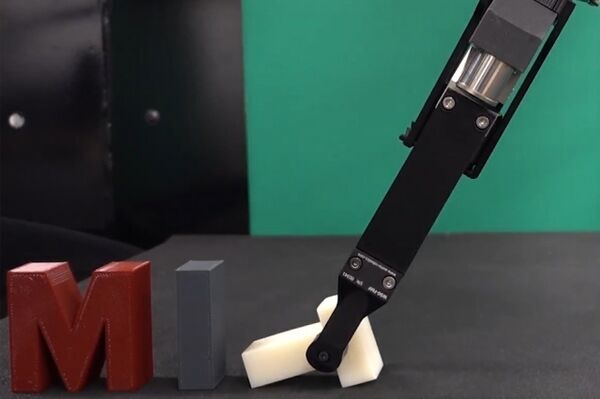
Giving robots a faster grasp
"An algorithm speeds up the planning process robots use to adjust their grip on objects, for picking and sorting, or tool use. If you’re at a desk with a pen or pencil handy, try this move: Grab the pen by one end with your thumb and index finger, and push the other end against the desk. Slide your fingers down the pen, then flip it upside down, without letting it drop. Not too hard, right? But for a robot — say, one that’s sorting through a bin of objects and attempting to get a good grasp on one of them — this is a computationally taxing maneuver. Before even attempting the move it must calculate a litany of properties and probabilities, such as the friction and geometry of the table, the pen, and its two fingers, and how various combinations of these properties interact mechanically, based on fundamental laws of physics." [...]
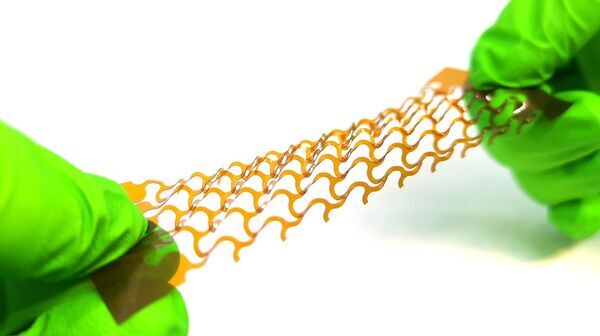
EPFL is developing next-generation soft hearing implants
"Working with clinicians from Massachusetts Eye and Ear and Harvard Medical School, a team of EPFL researchers has developed a conformable electrode implant that will allow people with a dysfunctional inner ear to hear again. This new device could replace existing auditory brainstem implants, which have a number of shortcomings. Close to half a million people around the world suffer from a serious hearing impairment. In some cases, they can find relief in cochlear and other types of implants. Yet these devices do not help people whose inner ear is damaged or whose auditory nerve does not function properly. For these patients to recover their sense of hearing, electrical signals must be sent directly to the auditory brainstem." [...]

Vibration in one direction only
"Electronic components such as transistors transmit electric currents in one direction only. What if we could create materials that could achieve similar effects for mechanical vibrations? For many applications, having materials that transmit vibrations in one direction, but not in the other, would be extremely useful. In nature, such materials do not exist, but a group of physicists from the University of Amsterdam has now designed a metamaterial that can do just that. Materials that show this ‘unidirectional transmission of motion’ could, for example, be used to build structures that would be much more resistant to earthquakes. Normal materials transmit information and energy – both wanted and unwanted – in every direction through mechanical vibrations." [...]
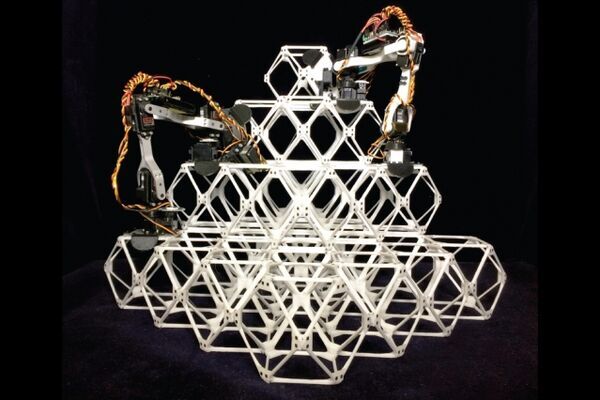
Assembler robots make large structures from little pieces
"Systems of tiny robots may someday build high-performance structures, from airplanes to space settlements. Today’s commercial aircraft are typically manufactured in sections, often in different locations — wings at one factory, fuselage sections at another, tail components somewhere else — and then flown to a central plant in huge cargo planes for final assembly. But what if the final assembly was the only assembly, with the whole plane built out of a large array of tiny identical pieces, all put together by an army of tiny robots? That’s the vision that graduate student Benjamin Jenett, working with Professor Neil Gershenfeld in MIT’s Center for Bits and Atoms (CBA), has been pursuing as his doctoral thesis work. It’s now reached the point that prototype versions of such robots can assemble small structures and even work together as a team to build up a larger assemblies. The new work appears in the October issue of the IEEE Robotics and Automation Letters, in a paper by Jenett, Gershenfeld, fellow graduate student Amira Abdel-Rahman, and CBA alumnus Kenneth Cheung SM ’07, PhD ’12, who is now at NASA’s Ames Research Center, where he leads the ARMADAS project to design a lunar base that could be built with robotic assembly." [...]
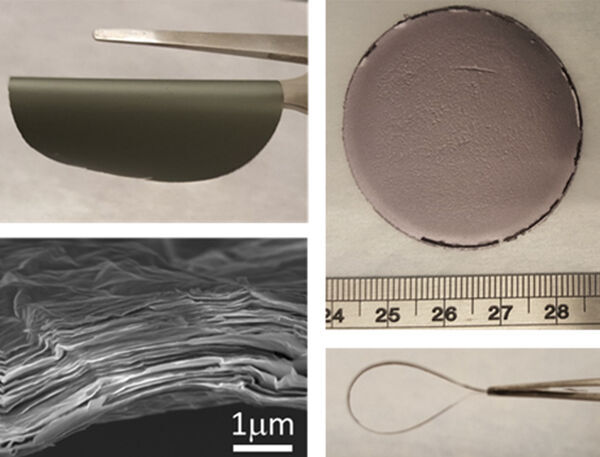
Taking 2D materials to the MAX
"A class of atomically thin 2D compounds, known as MXenes, have a unique combination of properties that are useful for electronic and sensing applications. Discovered by researchers at Drexel University as electrodes for energy applications, MXenes have become a research focus for KAUST. Husam Alshareef and his team specialize in creating nanomaterials for electronic and energy applications. They turn them into devices, such as supercapacitors, batteries and sensors. The chemically active surface and highly conducting core of MXenes make them an ideal candidate material for the group’s cutting-edge materials research. MXenes typically consist of a core of titanium and carbon atoms, just a few atoms thick." [...]
Modelos 3D
Com a disponibilidade de ferramentas que permitem dar azo a nossa imaginação na criação de peças 3D e espaços como o thingiverse para as publicar, esta rubrica apresenta alguns modelos selecionados que poderão ser úteis.
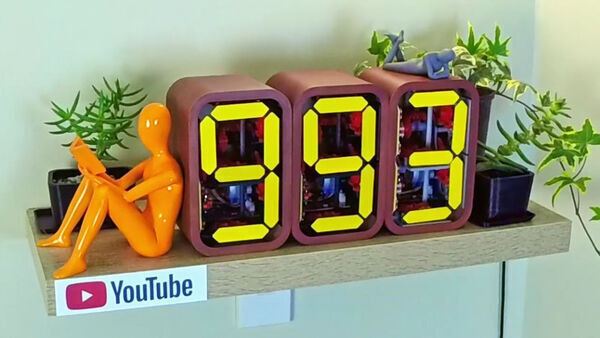
A mechanical 7 segment counter
"A kit to build a mechanical display that cycles through the numbers 0-9 by turning a crank. Do you love building mechanical contraptions? Complicated looking gear trains that perform some task? Then this kit is for you ! However, beware. It is not for the faint-hearted." [...]

Retro 7 Segment Clock TE (Tiny Edition)
"Here is what's hopefully the last iteration of my 7 segment clock I'll do... :D I always wanted to make on that's closer to the horizontal design than the SE turned out and here it is. Also this is the only one where all digits including the dots do fit on a 200mm wide print bed. It's done a few days now... I just couldn't get motivated to build it to take some pictures. So there's more renderings than pictures. But as electronics are the same as on the other ones there should be plenty of documentation already on the original thing and its remixes." [...]
Projetos Maker
Diversos Projetos interessantes.
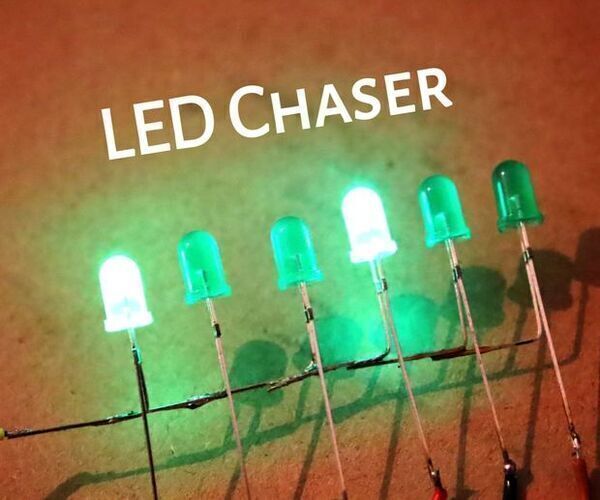
How to Make Best LED Chaser Circuit Without IC
"Today I am going to make an LED Chaser circuit without using IC.This circuit is amazing and I will make this circuit using BC547 Transistor.This is Best LED Chaser circuit. " [...]
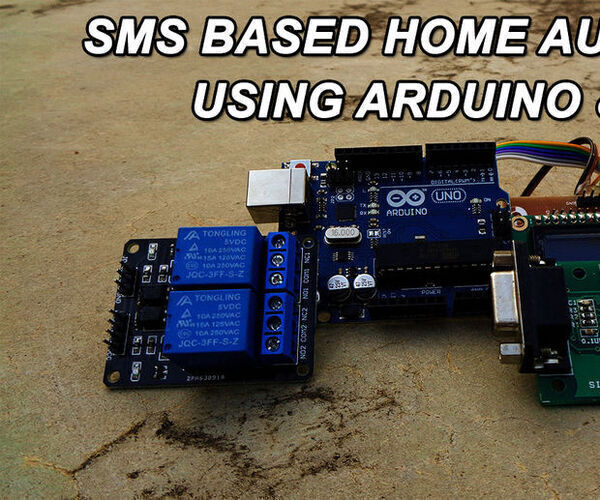
SMS Based Home Automation Using GSM and Arduino
"Hello friends, This is Anto...Mobile phone is a revolutionary invention of the century. It was primarily designed for making and receiving calls & text messages, but it has become the whole world after the Smart phone comes into the picture. In this project we are building a home automation system, where one can control the home appliances, using the simple GSM based phone, just by sending SMS through his phone. In this project, no Smart phone is needed, just the old GSM phone will work to switch ON and OFF any home electronic appliances, from anywhere. You can also check some more Wireless Home Automation projects here: IR Remote Controlled Home Automation using Arduino, Bluetooth Controlled Home Automation along with DTMF Based Home Automation, PC Controlled Home Automation using Arduino. Materials REquired:- Arduino UNO GSM Module ULN2003 Relay 5 volt Bulb with holder Connecting wires Bread board 16x2 LCD Power supply Cell phone" [...]

A CNC As Metallic Foil Embossing Machine
"Q: What can a CNC machine be used for?A: For embossing thin metallic foils :) In continuation to my article about embossing templates printed on a 3D printer I would like to present to you an embossing technique that I have tried and used successfully for some time. It is about making embossing with a CNC machine. In the article mentioned above I presented the generation of some STL files, this files can be imported into your favorite computer aided manufacturing (CAM) program and you can mill the model in wood, plastic or metal, obtaining a template. But no, it's not about making templates on a CNC machine. You can find CNC embossing machines, machines with considerable strength, which can emboss models in different materials. But its not about this, the technique I use does not require machines with great strength." [...]
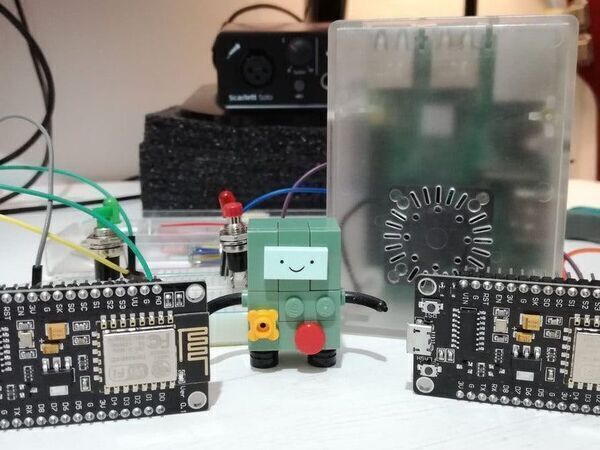
Exploring the MQTT Protocol with ESP8266
"Using an RPi as the MQTT broker. We'll explore 2-node communication as well as LWT messages (last will) Story In any IoT project we have a number of unique requirements and restrictions. The communication strategy to connect devices and send data between them is critically important. In this guide we will explore a powerful, simple and lightweight messaging protocol over the wire: MQTT Originally published on my blog. What's The MQTT Protocol? In the embedded world, we assume by default that the end-devices are going to work under a variety of processing capacity, energy or communicationconstraints." [...]
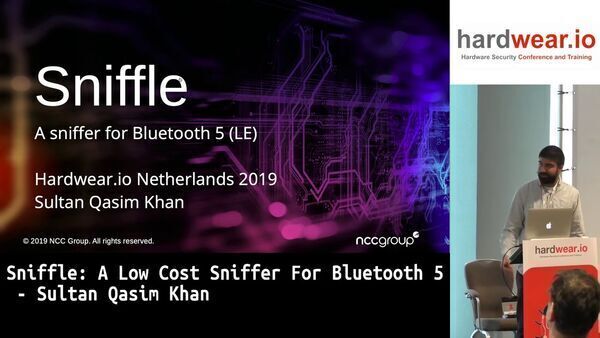
Sniffle: A Sniffer for Bluetooth 5
"Sniffle is the world’s first open source sniffer for Bluetooth 5, and also backwards compatible with Bluetooth 4.x LE. It runs on Texas Instruments CC26x2 microcontrollers, including the low cost CC26x2 Launchpad development board. The host side software for Sniffle is written in Python, enabling easy extension and modification, and providing cross platform support. In addition to displaying packets on the terminal console in real time, the host side software can save captured traffic to a standard PCAP format compatible with the Ubertooth. This allows easy analysis with Wireshark and other open source tools. Sniffle has a number of innovative and useful features that allow easy, convenient, and reliable sniffing." [...]
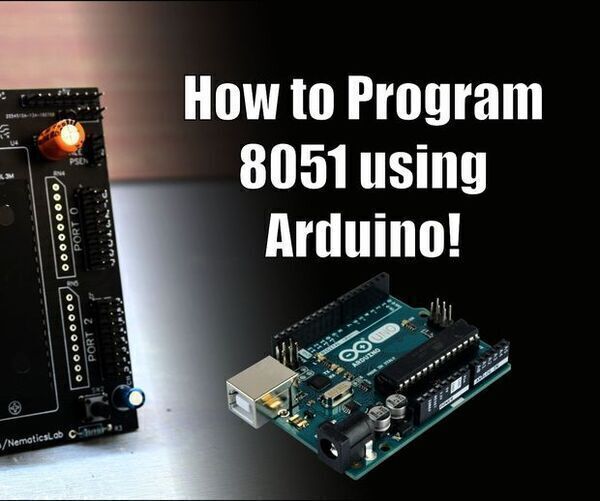
How to Program 8051 Using Arduino!
"In this tutorial, I will show you a really quick and easy way to program 8051 using an Arduino so without any further ado lets get started! Prerequisites- I'll recommend going through my previous article where I have shown you how to build an 8051 Minimal System Note- this method will only work with AT89S51, AT89S52 and might work on P89V51RD2(i haven't tested this IC as I cannot get my hands on one of those) Supplies: - Arduino Uno - Jumper cables - AT89S51/2" [...]

Accurate YouTube Subscriber Counter
"I started preparing for this project about one month ago, but then I was derailed by YouTube when they announced that they will no longer provide the real subscriber count but the closest rounded number. At the moment, that is not really an issue for me as I have less than 1000 subscribers, but the more subscribers you have, the more it becomes an issue. However, I was not demotivated and I set to find a solution. Two weeks later, YouTube Sight was born. YouTube Sight is a service that you can connect to with your YouTube channel account and it will provide you with a URL from which you can extract the full subscriber count and use it in your project. So far, Ive provided an example sketch for how you can use YouTube Sight, built an Arduino library for it and today with its help, I will create a fully working subscriber counter for my channel." [...]

ESP32 and DC Motors Tutorial Part 1
"This is a modification and addition to my instructable.com tutorials on DC Motors, and it also includes some information from my tutorial on the ESP32 Tutorial: Touch, Hall, I2C, PWM, ADC, & DAC. The earlier DC motor tutorials were focused on the Arduino UNO, while these tutorials are focused on the ESP32 development board. However, both groups of tutorials include similar, and in some instances identical, information. Thus, as noted, this tutorial is focused on DC Motors and ESP32 development boards. DC motors are ubiquitous. They convert electrical/magnetic energy, produced by a wire carrying current in a magnetic field, to motion, and they appear in all sorts of appliances and applications, e.g., they are found in small fans, ceiling fans, air cleaners, solder fume extractors, quadcopters, small helicopters, and other drones, hand-held rotary tools, circular saws, drills, lathes, sanders, cars, robots (where they rotate tires, or move robotic arms, etc." [...]
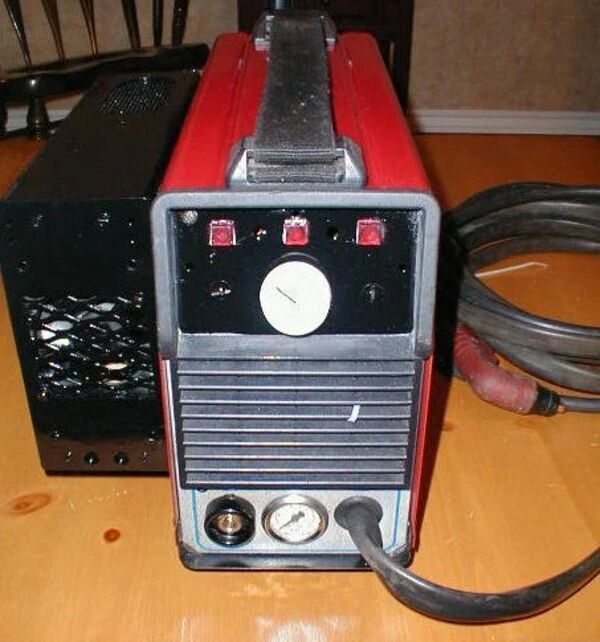
How to Make Your Own Plasma Cutter....
"This Ebook is designed for Guys and Gals who like to create tools and machinery. I hope my Ebook gives you hope that no matter how hard a project may seem, keep plugging away until you finish and you will succeed. I spent 3 years putting this together and now finally all my hard work and research has paid off. I studied diagrams from commercial venders, but to no luck. They tend to leave a lot out on purpose - so its hard to reproduce their design. Ive see different attempts at people making their own on You Tube and other sites, but what a death trap." [...]
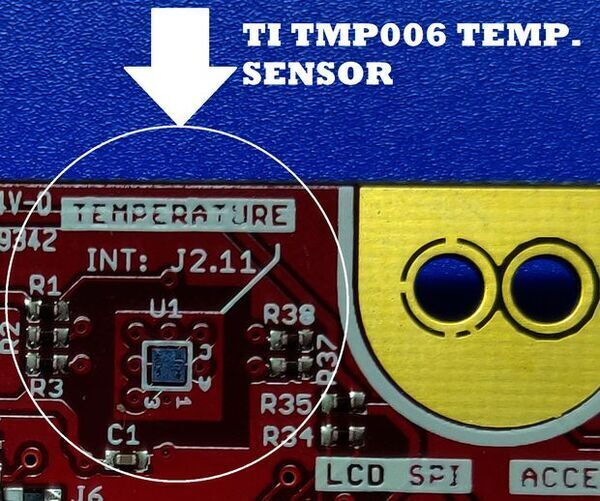
Plotting Live Data of a Temperature Sensor (TMP006) Using MSP432 LaunchPad and Python
"The TMP006 is a temperature sensor that measures the temperature of an object without the need to make contact with the object. In this tutorial well plot live temperature data from the BoosterPack (TI BOOSTXL-EDUMKII) using Python. " [...]
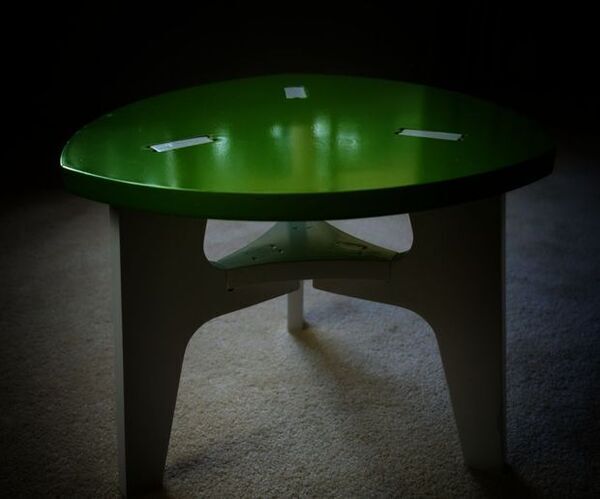
CNC a Small Footstool
"Want to build a kit foot stool in a few hours? This Instructable takes you along the path of using Fusion 360 to design and write a toolpath program for cutout by a CNC machine. You could easily do it using a jigsaw and drill if you wish? Supplies: - 600 x 600 x 16 mm mdf or ply - Paint - Good quality cross linked glue" [...]

Control a Solenoid With a D1 Mini Micro-controller and Push Button
"In this tutorial I show you how to control a pull type solenoid switch with a push button using the D1 mini. Solenoid switches have a wide range of uses from water/air valves to electrical relays. A pull type solenoid could be used as part of a locking mechanism with a button used to retract the pin from a barrel or frame. " [...]

MIDI/Arduino Controlled 8-Bit Sound Generator (AY-3-8910)
"Build a retro sounding 8-Bit Sound Generator and control it through MIDI.This design is partly inspired by Chiptune enthusiasts building Arduino circuits to play Chiptune files and some of my own ideas to integrate the sound of early video game consoles into my synth-jam setup.The design is centered around the 1978 AY-3-8910 programmable sound generator. This chip contains three independent square-wave oscillators (great for generating chords), a noise generator, an envelope generator and a mixer. All these functions are fully controllable, but it does comes with a few limitations; the design I am presenting here is meant as an extension to, for example, drum machines/samplers capable of sending MIDI (trigger) notes. This design, called TB-AY-3 (or Techno Box AY-3-8910) sounds best with the release-only type of envelope (i.e. to generate percussion type of sounds), but it does allow you to select other types.I pre-programmed 8 patches:The first 5 you can freely edit (Bass drum, Snare drum, Closed hi-hat, Open hi-hat and a bleep sound) The remaining 3 patches are hard coded (a random bleep sound, an arcade kind of video game sound and a Kraftwerk "pocket calculator" kind of random melody) You can't save the changes you make to the 5 selectable patches; the intention here is to tweak the sounds on the fly (as they are MIDI-triggered) - often resulting in cool techno patterns.Important to understand here is that the design is monophonic (only one patch at a time). Of course, I am including the Arduino code, so feel free to customize the default patches." [...]

Super Simple Sumo Bot
"Hi all! I am a robotics teacher and I like to make my students think. I teach them how to build robots, but I dont give them all the answers. Sometimes they have to design by themselves a piece of the robot, sometimes is the size of an element that needs to be calculated, and sometimes, like this one, I tell them EXACTLY how to build a robot, but the code I give them, although it is good and will make the robot perform as expected, it can be improved to make your robot more competitive. Oh! I forgot to tell you!" [...]
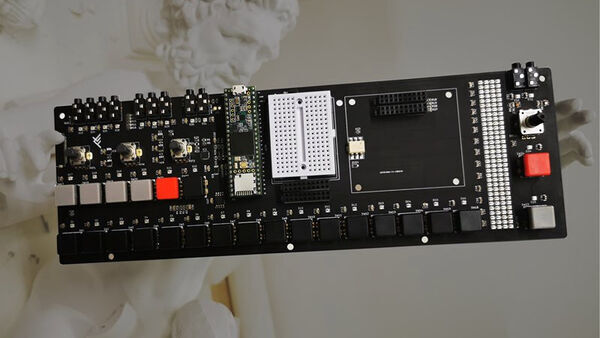
Shapeshifter V2
"OPEN SOURCE and OPEN HARDWARE DRUM MACHINE made in Italy by Faselunare.com Shapeshifter is an Open Source and Open Hardware User Expandable Drum Machine Users can expand both firmware and hardware. The v2, based on TEENSY 3.6, has the following features: - 24 Buttons - 3 Potentiometers - 1 Encoder - 163 RGB led - Multifunctional led matrix - 2 programmable audio outputs - Clock In, Clock Out and Reset - 4 Trigger Out for connection with the modular Eurorack world. - MIDI In/Out The initial firmware version will have 4 tracks with samples and 4 trigger tracks. Ability to save and load presets and patterns from the SD card The fun part: you can create hardware expansions by experimenting on the included breadboard and then creating a proper expansion board! From the software point of view, the user can indulge himself by creating new synthesis engines, adding tracks, combinations, associating each function with a different LED color ... the limit is imagination! Shapeshifter’s design is open-source, with everything available on Github for the curious musical tinkerers out there." [...]
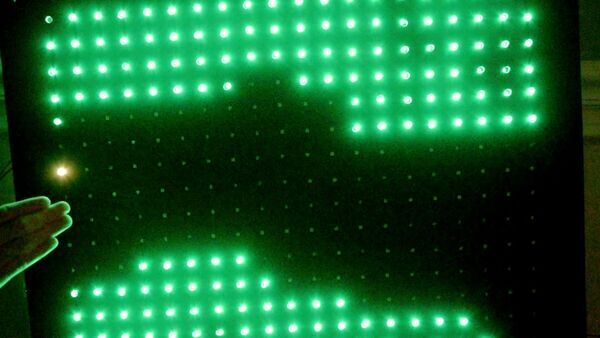
Playing "Flappy Bird" on an LED Matrix
"Use your hand to control the height of a pixel, and then navigate through a map full of obstacles to avoid. Get to the end to win! An Idea Most people have probably heard of the game Flappy Bird, where a tiny yellow bird must flap its wings to hop over a series of pipes. If the bird ends up hitting an obstacle, the bird dies, and the player loses. I had also just finished creating a large-format NeoPixel matrix, which made a flappy bird adaptation a great concept. " [...]

Raspberry Pi Web Page Based Sprinkler Controller
"Replace your sprinkler controller with a simple and inexpensive Raspberry Pi, web page-based system. Story Replace the old old sprinkler controller in your garage with a web page-based Raspberry Pi controller. In this project, I took a new Raspberry Pi, installed OpenSprinkler on it, and used a simple relay board to trigger my home sprinkler system. To schedule my sprinkler system, I access a web page served by the Raspberry Pi on my home network. The web page is accessible only on my home WiFi network. " [...]

Bolt IoT Notice Board
"We can use this notice boards at public places such as railway stations, bus terminus and inside buses for place indicators and in shops. INTRODUCTION: The main objective of the project is to control the notice board by using wireless communication devices like Wi-Fi module. MATERIALS REQUIRED: Arduino UNO, Bolt Wifi module, 8*32 LED MAX7219 matrix, Jumper wires. METHODOLOGY: All the connections are made by using circuit diagram. Each MAX driver can handle a 64 LEDs matrix. The arduino will send the data using a serial port communication." [...]
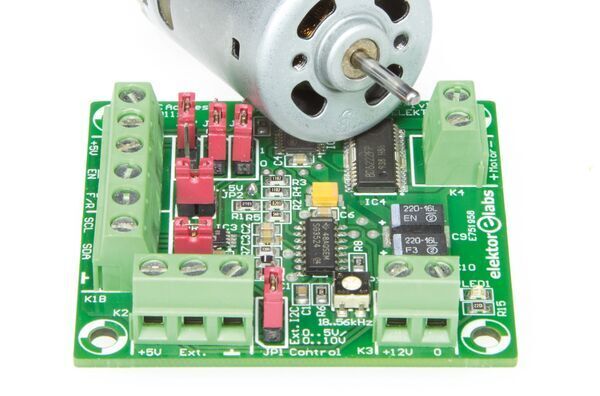
Precision Control for DC Motors
"This control circuit will provide the correct rotational speed and direction of a 12-V DC motor. Nothing special in that? But there is definitely, when you consider the multitude of potential options for actuating the motor. You can adjust the speed manually with a potentiometer (‘pot’), using a DC voltage level between 0 and 5 (or 10 V) or even digitally using I2C. " [...]
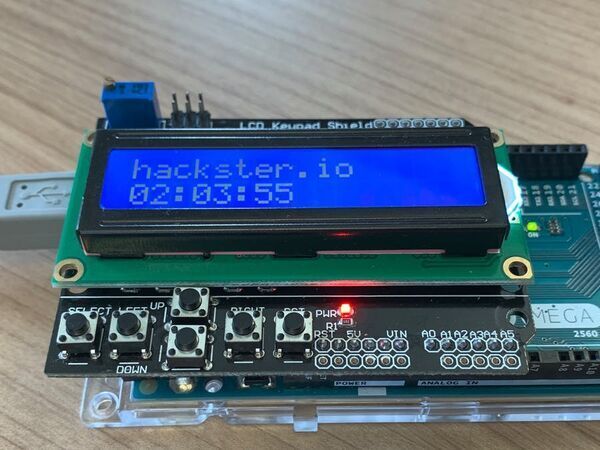
Digital Watch on Arduino Using a Finite State Machine
"Create a digital watch for Arduino combined with a 16x2 LCD Keypad Shield and using YAKINDU Statechart Tools. Hey there, I'm going to show you how a digital watch can be created with YAKINDU Statechart Tools and run on an Arduino, which uses a LCD Keypad Shield. The original model of the digital watch was taken from David Harel. He has published a paper about the "broad extension of the conventional formalism of state machines and state diagrams" In this paper he used the example of the digital watch for his research. I've used it as an inspiration and rebuilt the watch with YAKINDU Statechart Tools (a tool for creating graphical models of state machines and generate C/C++ code with it) and brought it back to life on an Arduino. " [...]
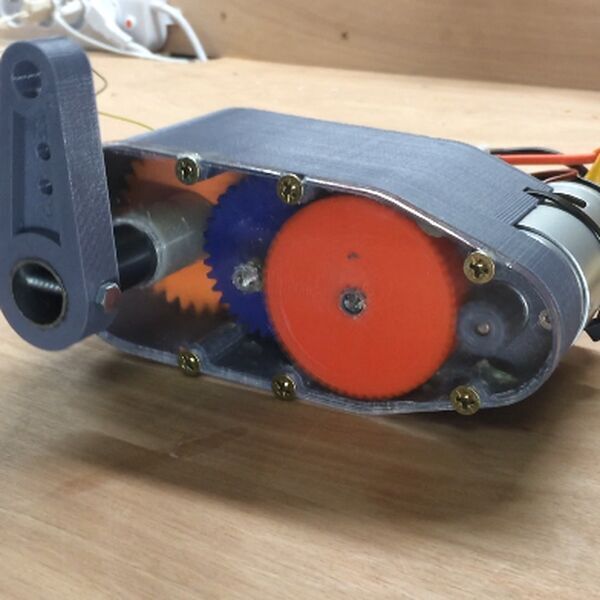
3D-printable high torque servo/gear reduction
"with only 8 3D-printed parts, this servo is very easy to assemble and very robust. This servo/gear reduction uses mostly 3D-printed parts. The servo uses a 775 36V 9000rpm brushed DC-motor wich is driven by a BTS7960B motor driver wich is controlled by an arduino mega 2560. The stall torque of the servo is about 55kg/cm wich is about 5.39 Nm. the peak current is about 18 amps when using a 6s LIPO battery (about 22-24V). the reduction ratio is 30:1." [...]
DIY - WiFi Controlled RGB Illuminated Skateboard
"This project was made do change the boring LED illuminated wheels on skateboards, e.g. penny board cruisers, that produced in series. Such boards has 3 LEDs in the each wheel that emitting the same light when you riding. I decided to create the custom solution with WiFi controlled LED lights. To achieve this I designed solution with hardware and software parts. Software part is the similar to the previous project that I have used, with lots of advantages, like autonomous (WiFi AP) mode with autoplay loop." [...]

How to Make LED Chaser Using NE555 IC BC547
"Today I am going to make an LED Chaser circuit using NE555 IC and BC547 Transistor.This LED Chaser is different from other LED Chasers circuit. Let's get started," [...]

Two-Mode Servo Tester
"When I buy a new servo motor, I want to quickly check if it is working. The Two-Mode Servo Tester lets me do that in a minute. Servos, at least the cheaper ones I know, sometimes do not work as expected when they arrive: The gears jump, the electronic in the servo does not work or it is a 120 degree and not a 180 degree servo. It is a good thing to test a servo. Until now, I used to grab a breadboard, an Arduino, a 5V power supply, a USB cable, my PC and some jumper cables and built a servo tester every time from scratch. The Two-Mode Servo Tester is all that and more in a case." [...]
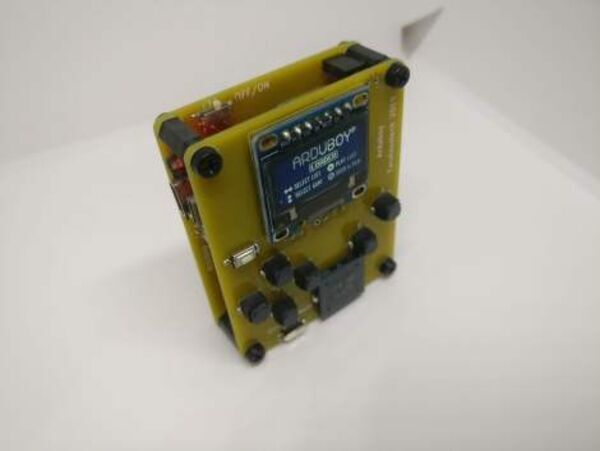
Arduboy With Removable Flash Cart
"I’ve been meaning to get round to doing a Arduboy but never got round to it. I’m quite glad I waited because there seams to be a resurgence in the platform as of late. Also they have added the ability to add a flash cart to your build. What makes all this so easy is its all open source with lots of documentation. Join me below to see how my build panned out… Hardware - Arduino pro micro - SSD1306 0.96” SPI Serial 128X64 OLED LCD - Soft touch buttons x6 - SMD reboot button x1 - SMD slide switch x2 - SMD Piezo speaker x1 - W25Q128 128Mb - TXB0104 Voltage Level Shift Arduboy build I’ll start with the Arduboy its self. I wanted to make a small Arduboy that anyone with basic soldering skills could make." [...]
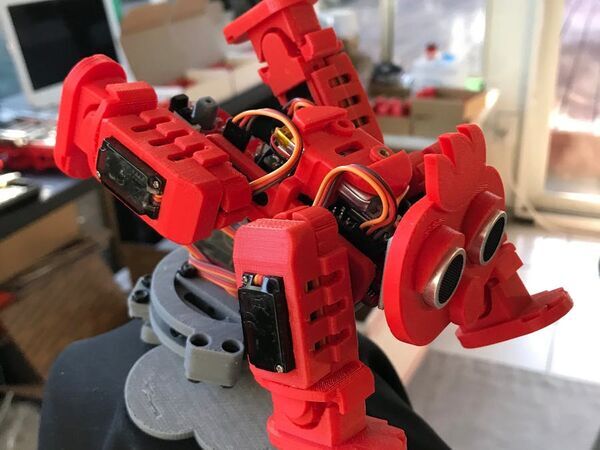
4-Legged Walking Robot
"Arduino Nano or Obniz controlled robot design information. A robot control board with four servo-controlled feet and a face with a distance sensor. The control board can use Arduino nano or Obniz. The example above uses Arduino Nano 33 IoT. Each part such as face and foot is 3D-printed. In addition to the sonar sensor on the face and the gyro sensor on the Nano 33, remote control using the IR sensor provided on the back is possible." [...]
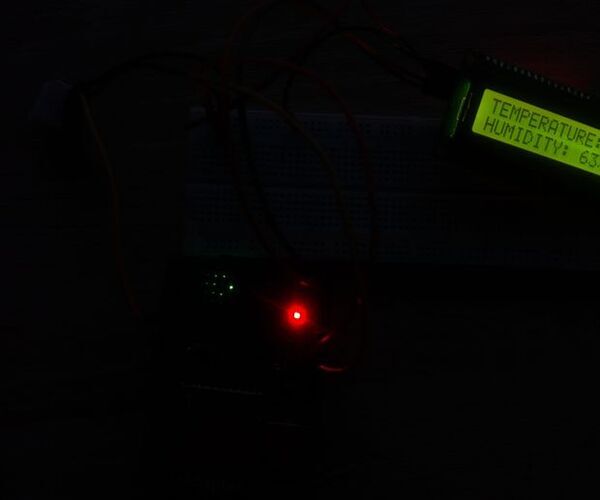
Arduino Working With Multiple Files (READ/WRITE)
"Hello guys Today I am presenting you Arduino project which works with RTC shield that can stores data. The main task of this project is working with multiple files that are stored on sc card. This project contains code that works with three files which are stored directly on SD card with arduino and RTC shield. Because this project works with DataLogger shield, that data will also be stored at exactly same time as it is on your PC. This project is upgraded version of my last project. That project can be found on instructables site by the name Arduino Data Logger Shield Small Project." [...]

Simple ESP32 Internet Radio with OLED Display
"A DIY cheap one-button internet radio. Commercial internet radio receivers are still relatively expensive and cost $ 100 and up. So I decided to make a device that is functional, easy to make and manage and inexpensive. On the site "electronicsforu.com" is given exactly such device that uses cheap MP3 VS1053 codec processor from "aliexpress.com" and ESP32 MCU. Optional can be added OLED display to know which station is playing. The ESP32 is connected on the streaming site at the fixed port and then receive the streaming data in an exact chunk of 32 bytes at a time." [...]
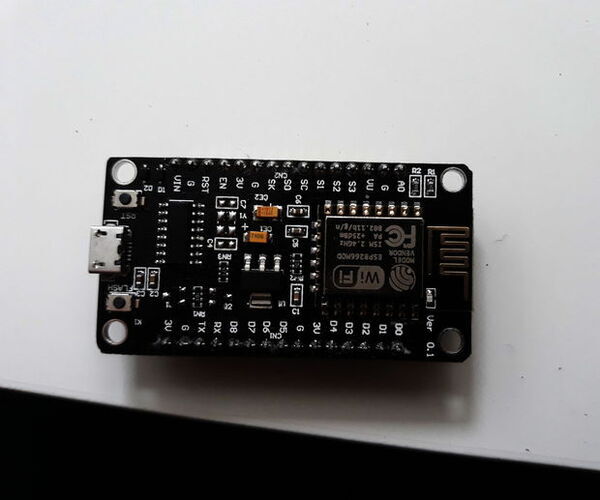
Soil Moister With Node
"In this manual I will show you how to make a homade soil sensor for the gardenhealth system. I will show you what you need, give some code examples and how to implement the code. At the end of the instructions you wil know how to change a led strip's color when the soil is wet, a bit wet or dry. In this manual I will use: Arduino version 1.8.9 The Adafruit_NeoPixel.h librarySupplies:You wil need: NodeMCU 1.0 (ESP-12E module) 1 female to female cable A LED strip (Optional) Homade soil sensor (Watch the video above until 00:36)" [...]
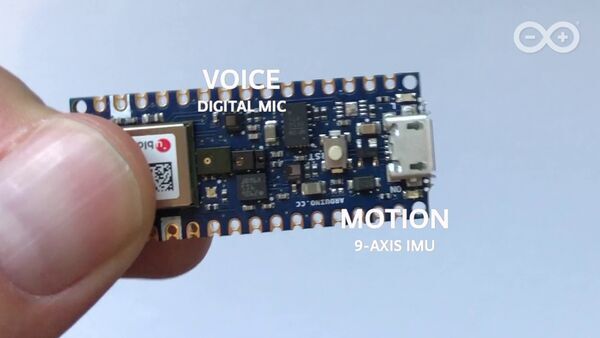
How-to Get Started with Machine Learning on Arduino
"Arduino is on a mission to make Machine Learning simple enough for anyone to use. We’ve been working with the TensorFlow Lite team over the past few months and are excited to show you what we’ve been up to together: bringing TensorFlow Lite Micro to the Arduino Nano 33 BLE Sense. In this article, we’ll show you how to install and run several new TensorFlow Lite Micro examples that are now available in the Arduino Library Manager. The first tutorial below shows you how to install a neural network on your Arduino board to recognize simple voice commands. " [...]
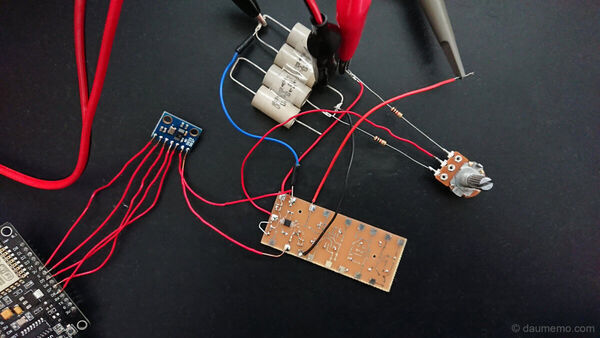
DIY AD9833 signal generator – first steps
"As the name suggests, I am going to write about a self-made signal generator based on an AD9833 IC. Also, this is going to be a multi part post, as it is impossible to design and make a fully functional device within a short period of time and even write a single huge blog post. So, today’s post is about an analog part of the DIY signal generator. " [...]
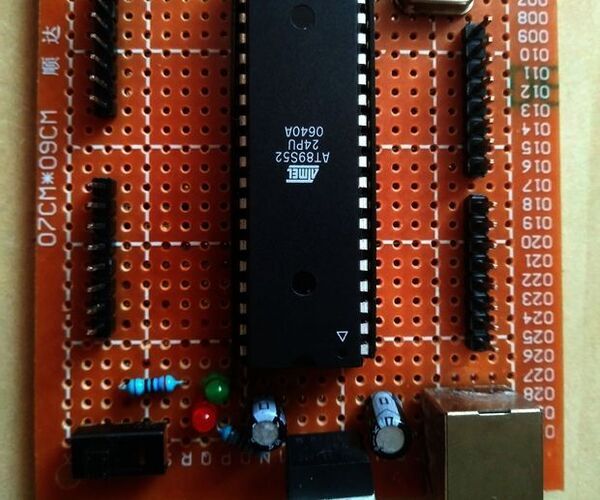
AT89S52 - Veroboard & Upcycling Components
"Build your own ancestor of Arduino with upcycled components. 32 I/O programmable. Is this an ISP programmable microcontroller. Easy and instructive build project. (Ok... i buy Veroboard for this one, or you could do it on breadboard)" [...]
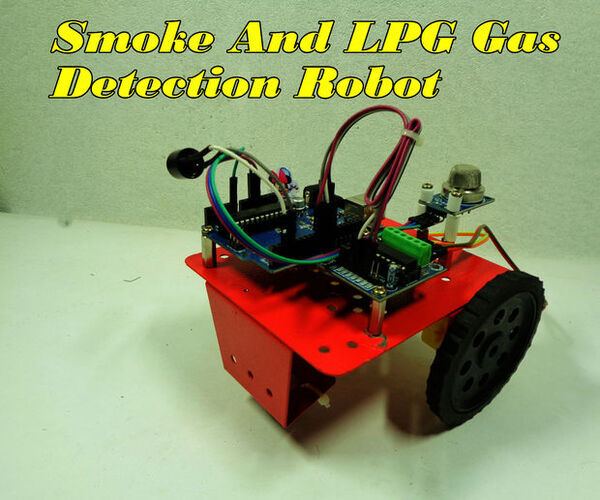
Smoke and LPG Gas Detection Robot
"Hello friends, I am Anto...While LPG is an essential need of every household, its leakage could lead to a disaster. To alert on LPG leakage and prevent any mis-happening there are various products to detect the leakage. Here we have developed an Arduino based LPG gas detector alarm robot. If gas leakage occurs, this system detects it and makes an alert by buzing the buzzer attached with the circuit. This system is easy to build and anyone who have some knowledge of electronics and programing, can build it..We have used a LPG gas sensor module to detect LPG Gas. When LPG gas leakage occurs, it gives a HIGH pulse on its DO pin and arduino continuously reads its DO pin" [...]
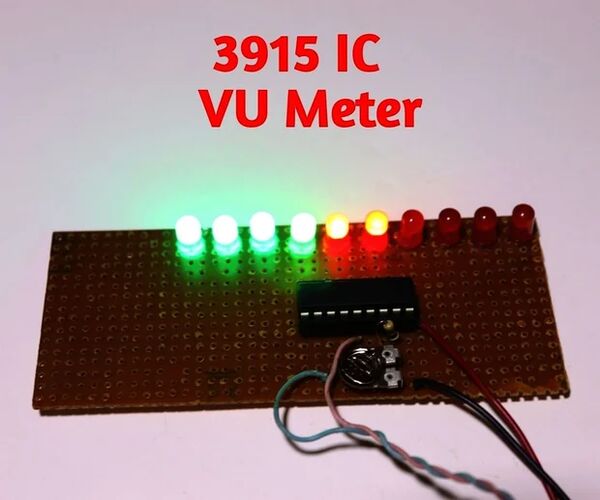
VU Meter Using 3915 IC
"Today I am going to make a VU Meter Meter circuit that will show the level of audio in the LED.In this VU Meter I will use 10 LED. Let's get started," [...]

Protect Yourself With This Noise Level Monitor
"Hello friends, I am Anto.. Arduino-based noise/sound level monitor project which that displays sound levels in decibels (dB) and corresponding voltage levels on an LCD. A noise monitoring system is used in many applications such as healthcare, defence, mining, robotics and so on. This circuit is especially designed for noise monitoring in public places like parties, marriage functions,ect.... The hearing capability of a person is around 80dBsounds above this can cause a huge hearing loss if high sound levels or volume are too long. " [...]
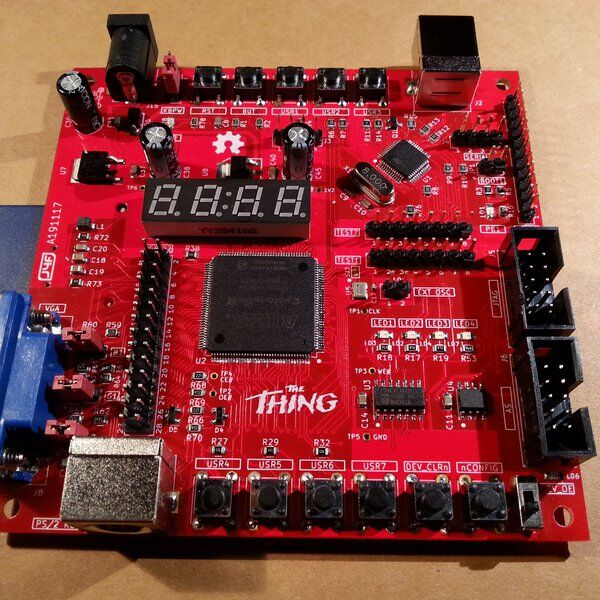
"The Thing": FPGA + STM32
"An homemade FPGA board with an Arduino STM32, "Multicomp" compatible Two dev boards into one: a STM32 based Arduino ("Maple Mini" compatible) and a Cyclone II FPGA dev. board to start playing with VHDL/Verilog. It is also "Multicomp" compatible ("Multicomp" is a modular VHDL design to "run" some famous retro 8 bit CPUs made by Grant Searle) giving the option to "run" easily a VHDL SOC with a Z80/6809/6502 CPU and I/O, including HD (on SD) and a color VDU. The Thing is the the "natural" evolution of the CPLD Fun Board. The idea was to make a FPGA board using cheap and easy to find components, with a STM32 Arduino used as "stimulus generator" or "companion" processor for the FPGA, and with a 512KB SRAM and common I/O as GPIOs, VGA and a PS/2 keyboard to "run" HDL SOCs. More, it has the option to "run" easily Multicomp VHDL SOCs having the needed HW." [...]
That's all Folks!



